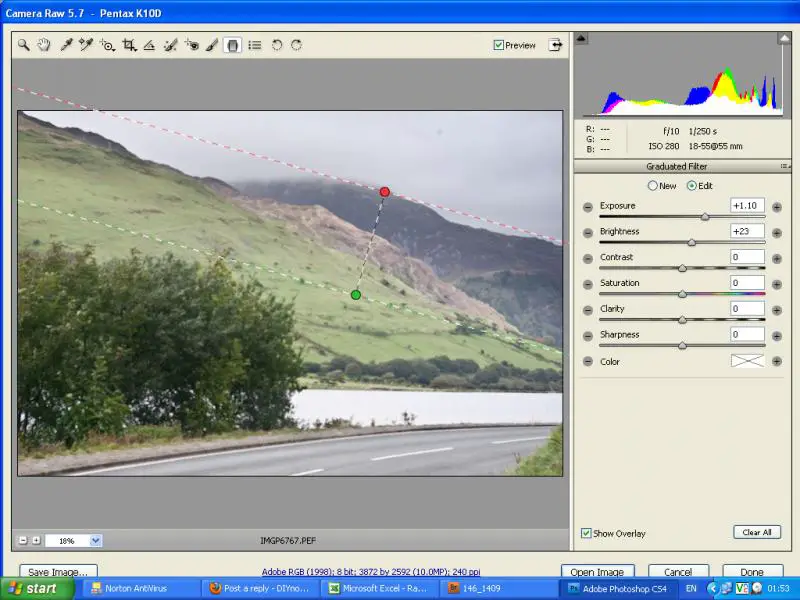Not that I am 'puffing my chest out' but I speak as an ex-professional 'still' photographer (now a broadcast videographer) and would disagree with Woody when he supposes that you don't really need a filter as you can use software afterwards.
This is not the way to go. Any adjustment to the image via software leaves its mark. Even taking a RAW image file and making all NEEDED adjustments - you should adjust minimally - to keep the camera image as 'pure' as possible. Do as much in-camera as you can that way you will save the image quality and a lot of time in post production! And so shoot in RAW I think Canon enables you to shoot RAW & JPG at the same time.
RAW is, as the name imples, a raw uncompressed file with no adjustments meaning you do all the adjustment on the camera the tweak to perfection using Photoshop or similar (Canon has its own Canon RAW program). People tend not to use RAW because the see the RAW and JPG image files and think the JPG is a much better image - it isnt, it's just been fed through the cameras image processing.
As others have mentioned a UV or skylight filter is bog standard kit mainly to protect your lens, as both these filters are superfluous these days with moderm lens coatings.
Keeping a ND filter on your lens is acceptable but..... it will greatly reduce your exposure settings meaning you will probably have to up the sensitivity (ISO) to get a good shutter speed and aperture - especially if hand-held or taking moving images.
Increasing the ISO can degrade your image, the higher the ISO the more 'grain' (to use the old film term) or artifacts are likely to appear. These may not be noticeable on small prints, but on larger prints of darker subjects (for example) the more they will notice.
A Canon 60D is a pretty good camera and Canon are only fractionally behind Nikon on dealing with ISO induced artifacts so it is probably unlikely you'll need to be bothered too much by this, but you do need to think about it when you are 'in-the-field' standing behind the camera and deciding what to do that little 2x3inch preview screen will not show you!
For both still and video I always carry a couple of graduating ND filters as they are a must for any kind of landscape setting. Mounted in a Cokin P type filter holder, they can be inserted so that the darker area of the filter 'covers' the skyline thus the brighter sky will not be washed out when you expose for the darker 'land' area. If you tend to shoot in automatic mode landscapes can be anightmare because the in-built light meter will expose for -say- the sky in shot one.... move the camera just millimeters and it will expose for the land - either way whatever happens, you end up with a load of photos all either under or over exposed!
One further point worth mentioning - filter quality. A filter should be considered as a 'lens' albeit without magnification. Now you have just purchased your nice new 60D - would you bung a £4 lens on it? well, apparently you have! You have effectively reduced the quality of your £200?) kit lens to £4... well, ok maybe not that severe but that is how you should look at it. I have a polorising lens on my video camera that cost £145 - not for any reason other than quality! it is optically correct thereby no flaws, no distortion, etc. It is false economy to buy a cheap filter especially if you might want to use two filters at once and in my experience cheap polorisers do not always do the job correctly and/or effectively.
Also did you buy the 'correct' circular poloriser,a d not a linear poloriser? I will not add a further paragraph trying to explain the difference but there is one and you can 'wiki' for the difference.
The main thing really is before you start adding filters learn to use the camera fully without, then add then from time to time to see the difference. Shoot as much as possible in manual mode too if you really want to learn about what you are doing and thus what is possible to achieve with your kit - DO NOT RELY ON PHOTOSHOP
Photoshop takes your photograph and turns it into a painting!
Gosh... I've just written my first book!




